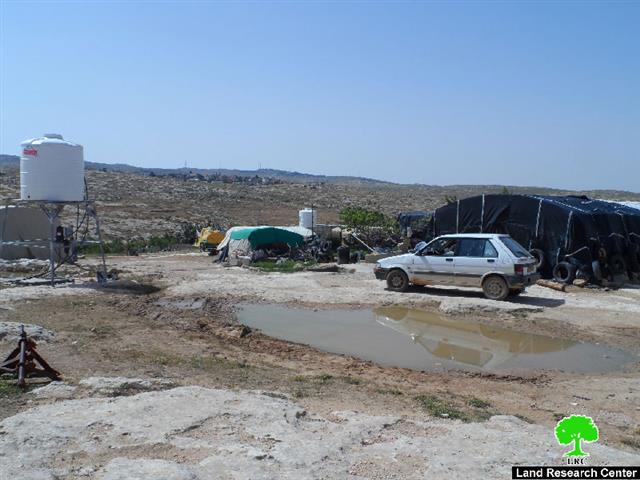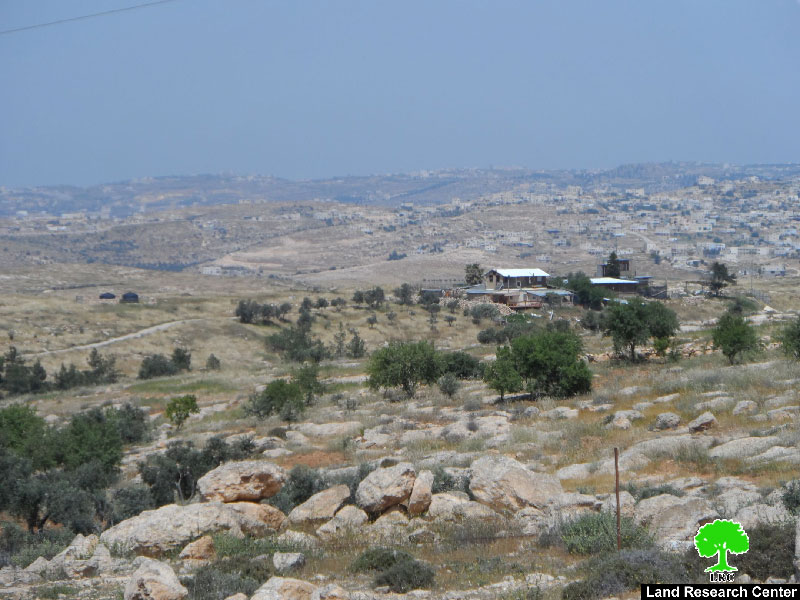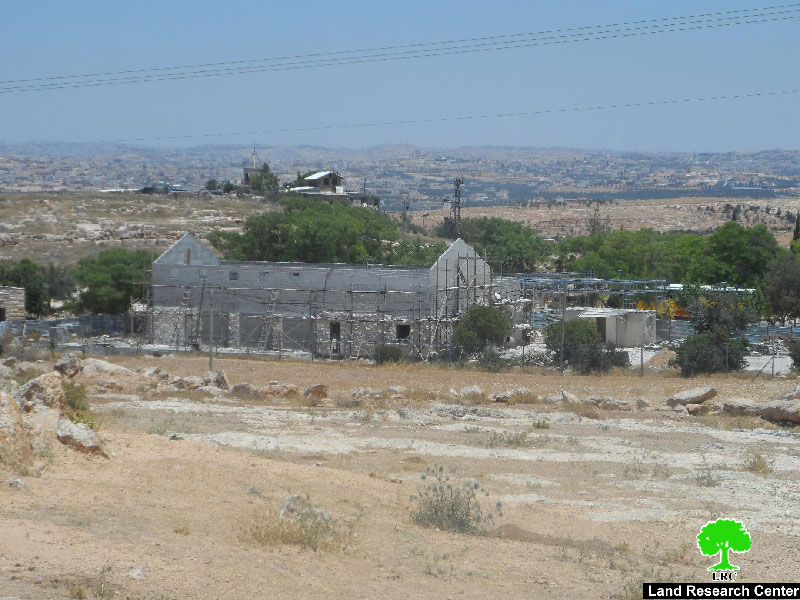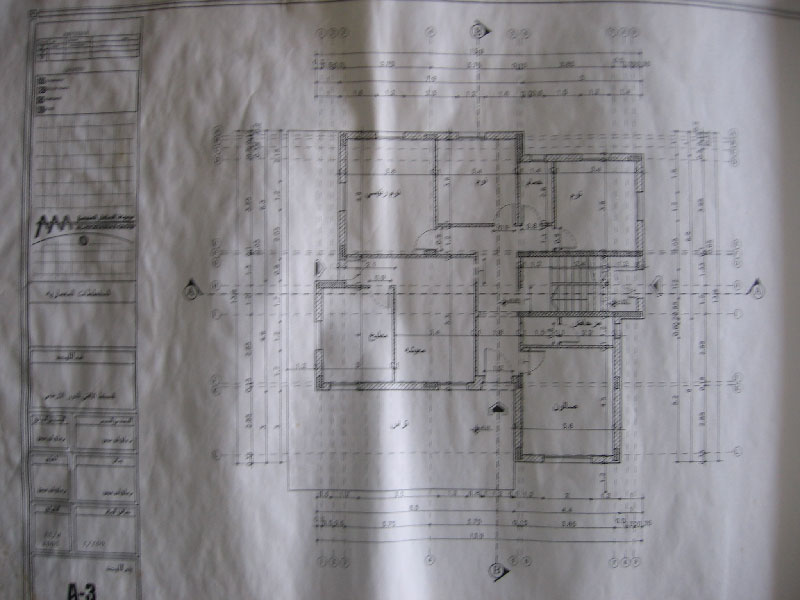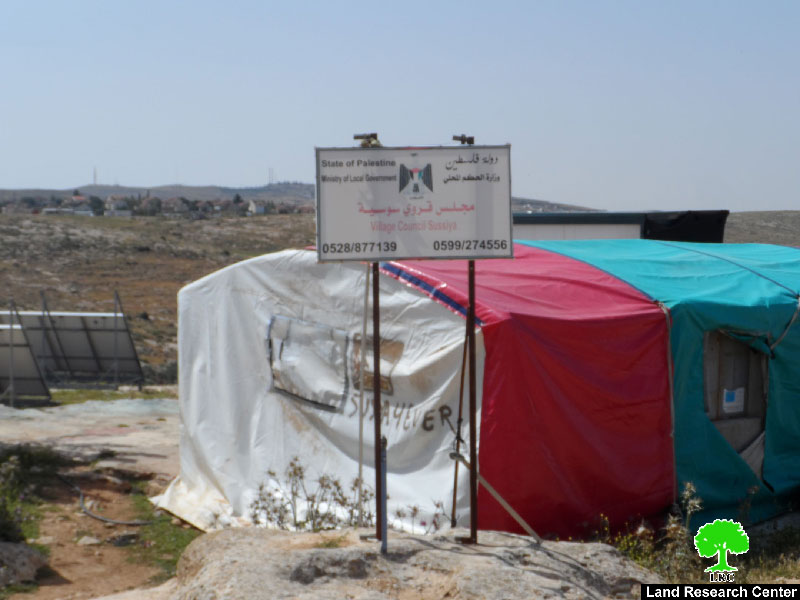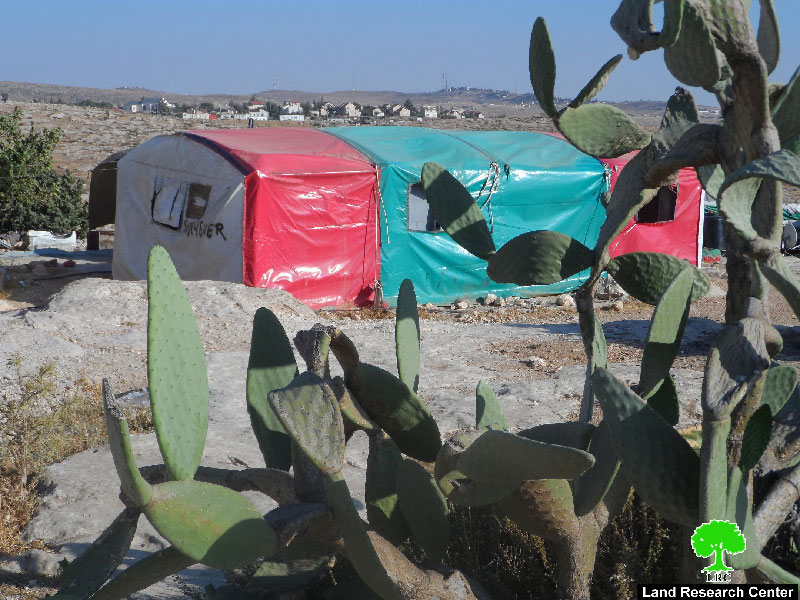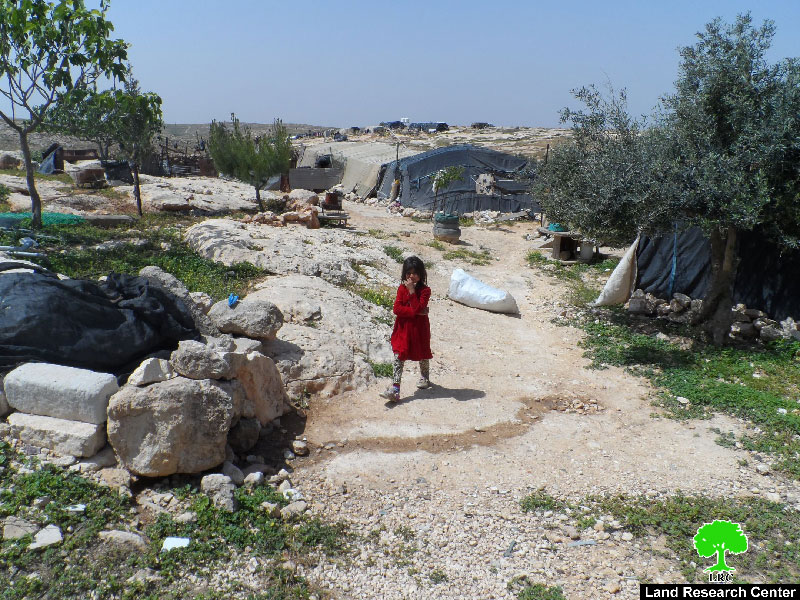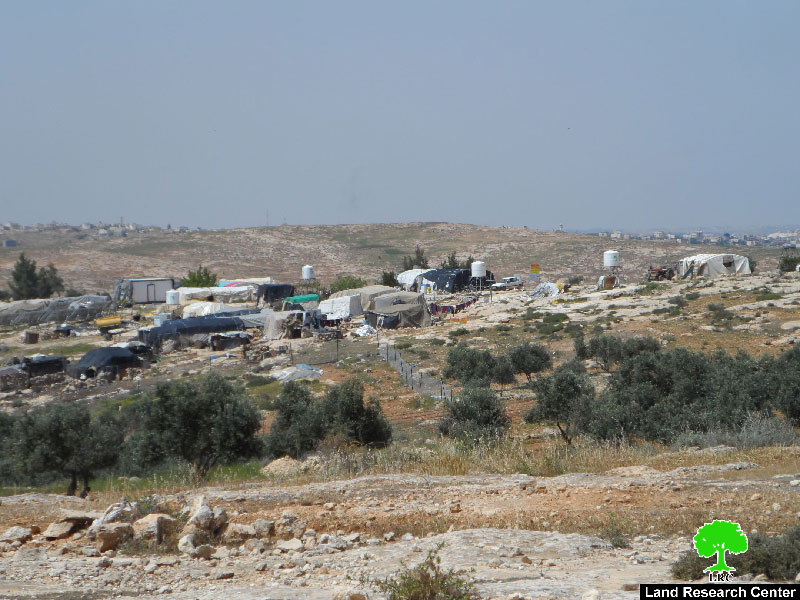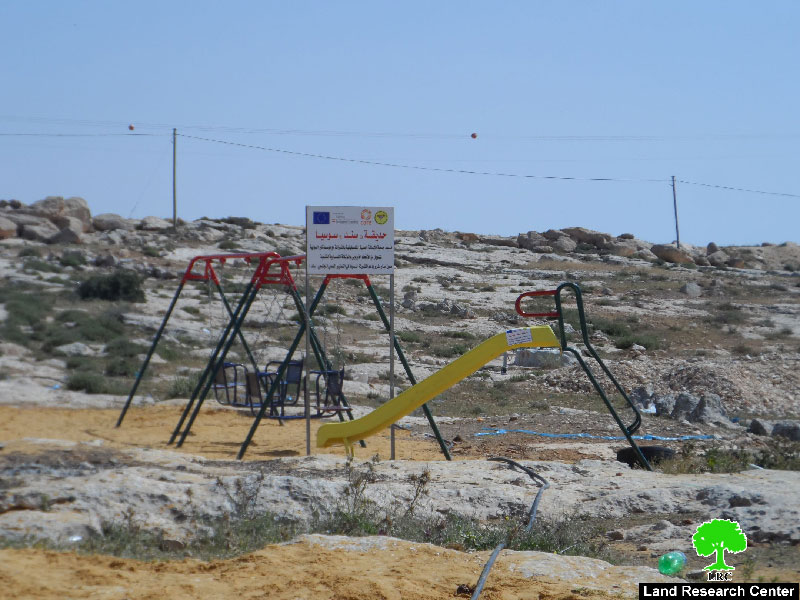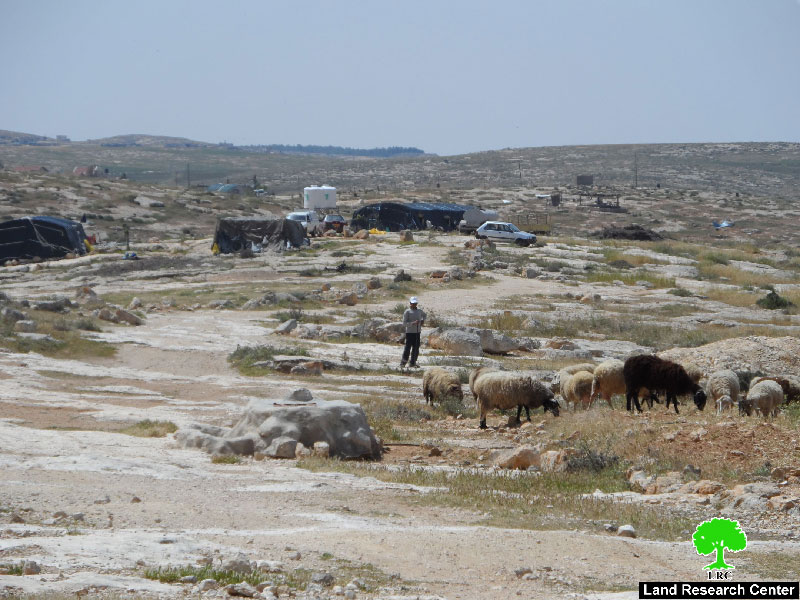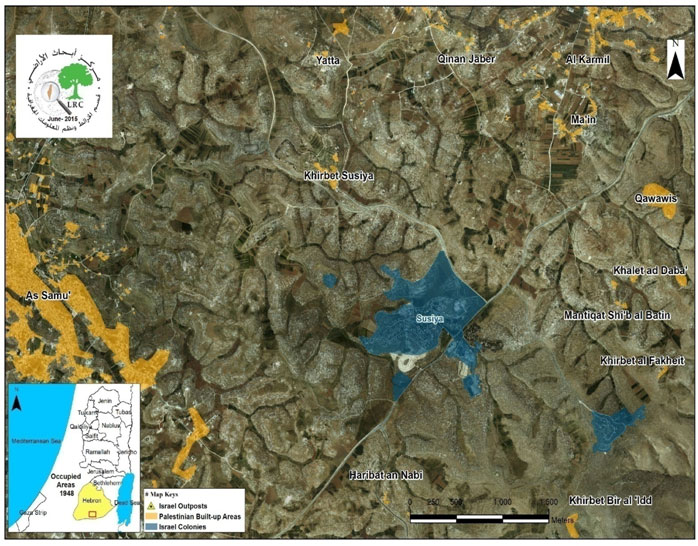The Israeli newspaper Haaretz on March 29, 2015 featured an advertisement, which shows that the Israeli government applied for the Supreme Court to obtain an approval on demolishing Susiya hamlet that is located south Yatta town in Hebron and displacing its residents to a nearby location under the claim of lacking infrastructure.
First displacement:
The Israeli occupation authorities in 1952 displaced citizens of Nawaj’a family from their lands in the area of Tal Irad-Negev after killing a big number of others and confiscating vast area from their lands.
As a result, people took the area of Susiya in Yatta town as a shelter, where a number of families lived in caves. The displaced people bought some lands in the area and dug caves for winter and built tents for the summer season.
First of harassments:
By the beginning of 1980s, the Israeli occupation authorities implemented a policy of harassment on Susiya’s residents, where the Israel Ministry of Archeology carried out excavations amidst the residence of the villagers. Thus, residents were forcibly displaced under the claim of the hamlet being an archeological site. As a result, the place was fenced and declared inaccessible; this was in 1983, when the hamlet was just established. People then resided in another area, west of their original hamlet and next to the Israeli colony of Susiya, which was named after the place.
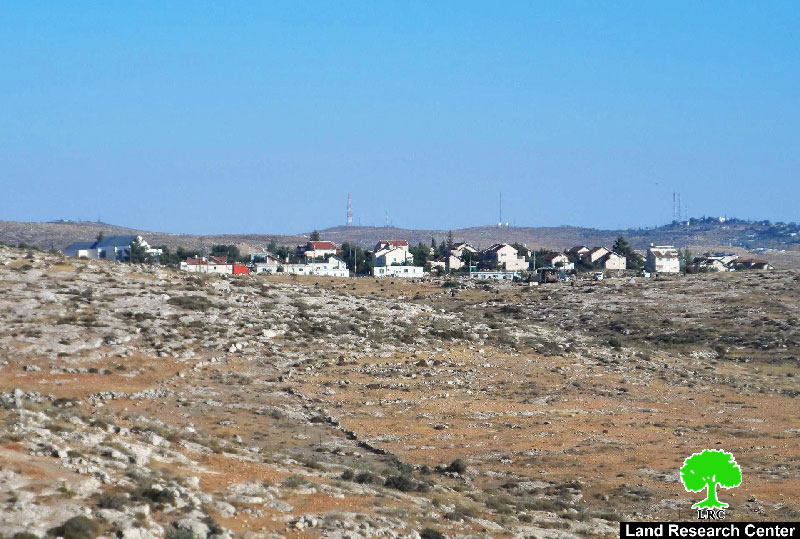
Photo 1: a view of Susiya colony
As for the fenced place, the occupation worked hard to forge history and change the landmarks into new ones that fit the Jewish narrative. A number of Roman and Islamic antiquities were reported to be founded in the area. It should be marked that the hamlet niche was transformed into a synagogue, where rituals and religious visits are conducted. A museum was opened to exhibit the old agricultural equipments that Susiya people utilized. The caves were used as a lie to tell visitors about a fabricated story of “Jewish Ancestors” who used to reside the area.
Photos 2-4: view of susya hamlet; the hometown of indigenous people
The occupation orders Susiya residents to license their structures:
By the beginning of 1990, the Israeli occupation authorities ordered the residents of Susiya to obtain building permits for their already established structures. Residents set up a 2km barbed wires fence around their hamlet to prevent colonists’ attacks but the occupation came and dismantled it.
In 1996, dozer of the occupation army demolished all of the structures established in Susiya hamlet and filled the residents’ caves with stones and dirt.
After the death of a Susiya colonist in 2001, a demolition was inflected on the whole hamlet, causing the residents to move to the nearby village of Um Nir. Residents were not allowed to come back and work on their lands but through specific permits issued by the occupation. Therefore, residents took action through Israeli courts and appeals, which ended up with a decision allowing farmers to go back live in the hamlet. Also, residents of Susiya submitted plans and proposals to establish barns and agricultural structures to the occupation’s authorities so that they get granted the needed licenses. All plans and proposals were met with rejection and denial under the claim of the proposed lands being “State lands”.
Photo 5: the plans submitted for license obtaining
Targeting the hamlet’s structures with military noticesorders:
Susiya hamlet has been targeted with stop-work and demolition orders under the claim of “unlicensed construction”, taking into account that the Israeli government never grants such permits for Palestinians.
Land Research Center, through field observation, documented the following reports in regard to stop-work and demolition orders on Susiya hamlet:
- A colonial group “Raghafim” requested Israel Supreme Court to implement the demolition decision made in mid 1990s.Therefore, the court made a decision on June 06, 2012 that gave Susiya’s residents the right to object to the demolition within a three day deadline. An order entitled “additional opportunity to object a demolition” was served by Israel Civil Administration on June 12, 2012. Thus, attorney Qamar Mashriqi was sought by the residents to object the order.
It should be marked that the Israeli occupation authorities, through aerial maps and photos, notified each structure surrounding a tent, which was notified in mid 1990s, of demolition. Noteworthy, the hamlet accommodated one tent at that time, where now it has a number of residential and agricultural structures. The recently notified structures surrounding the ancient tent have never received any stop-work notices before.
According to the aerial map, demolition will be inflected on 5 residential communities in the area of Susiya. The threatened structures include residential tents, barns, barracks for sheep and birds, caves, water cisterns, health clinic and a kindergarten. All in all, the hamlet’s all structures were notified with demolition.
Military demolition orders targeted five people, who now have extended families, expanded structures and properties in the area of Susiya. The affected residents were categorized as follows:
- Citizen Ahmad Nawaj’a: He received an “additional opportunity to object a demolition” order on the previous demolition order no. 5541 that was served on March 26, 1996. The order targeted a tent and a barn by then.
The following table shows the demographic expansion of citizen Ahamd and his extended family:
|
No. |
Name |
Family |
Minors |
No. of threatened structures |
Aream2 |
Nature of structures |
|
1 |
Mohammad Ahmad Nawaj’a |
5 |
0 |
6 |
350 |
Residential tent, kitchen, tent(shop), two barns, chicken coop |
|
2 |
Jihad Mohammad Ahmad Nawaj’a |
10 |
5 |
4 |
300 |
Residential tent, barrack for sheep, kitchen, tent for fodder storing |
|
3 |
Nsir Mohammad Ahmad Nawaj’a |
4 |
2 |
3 |
270 |
Residential tent, barrack for sheep, bathroom |
|
4 |
Mahmoud Ahmad Nawaj’a |
10 |
7 |
5 |
500 |
Residential tent(2), kitchen, barrack for sheep, chicken coop |
|
5 |
Othman Hammad Abu Sabhha |
2 |
0 |
2 |
270 |
Residential tent, kitchen, barrack for sheep, |
|
6 |
Ahmad Mohammad Ahmad Nawaj’a |
5 |
3 |
3 |
220 |
Residential tent, kitchen, barrack for sheep, |
|
7 |
Kindergarten |
|
20 |
1 |
50 |
Tent built in 2011 |
|
8 |
Health clinic |
|
|
1 |
50 |
Tent built in 2012 |
|
9 |
Museum |
|
|
1 |
40 |
Ancient cave that colonists turned into museum in 2012 |
|
Total |
36 |
37 |
26 |
2050 |
|
|
Source: Field observation- Department of Monitoring Israeli Violations- Land Research Center-2015
- Citizen Khalid Hammad Nawaj’a: He received an “additional opportunity to object a demolition” order on the previous demolition order no. 5542 that was served on March 26, 1996. The order targeted a tent and a barn by then. Khalid asserted that he moved his structures to another place at time and left some small barns. Yet, the aerial photo still shows the structures existing in the area, which means that the photo is old. The following table shows information about the structures remained in the area:
|
No. |
Name |
Family |
Minors |
No. of structures |
Aream2 |
Nature of structure |
|
1 |
Khalid Nawaj’a |
11 |
3 |
5 |
600 |
Cave for storing fodder, bathroom, two chicken coops and a barn |
Source : Field observation- Department of Monitoring Israeli Violations- Land Research Center-2015
- Khalil Mohammad Nawaj’a: He received an “additional opportunity to object a demolition” order on the previous demolition order no. 1424 that was served on May 05, 1997. The order targeted a cave and a barn by then. The following table shows information about the structures in the area:
|
No |
Name |
Family |
Minors |
No. of structures |
Aream2 |
Nature of structure |
|
1 |
Khalil Mohammad Nawaj’a |
2 |
0 |
4 |
350 |
Cave for sheep, residential tent, barn and a kitchen |
Source : Field observation- Department of Monitoring Israeli Violations- Land Research Center-2015
- Citizen Ismael Salahah Nawaj’a: He received an “additional opportunity to object a demolition” order on the previous demolition order no. 4638 that was served on February 19, 1995. The order targeted a tent and a barn by then. The following table shows information about the structures in the area:
|
No. |
Name |
Family |
Minors |
No. of structure |
Aream2 |
Structure |
|
1 |
Ismael Salahah Nawaj’a |
2 |
0 |
5 |
450 |
Residential tent, two bathrooms, barn, and a cave for storing fodder |
|
2 |
Imran Ismael Salahah Nawaj’a |
14 |
10 |
5 |
700 |
Two residential tents, hall for the family, bathroom, and a barn |
|
3 |
Jamal Ismael Salahah Nawaj’a |
7 |
5 |
7 |
700 |
Residential tent, barn, two bathrooms, cave and a traditional oven (Tabun) |
|
Total |
23 |
15 |
17 |
1850 |
|
|
Source: Field observation- Department of Monitoring Israeli Violations- Land Research Center-2015
- Mohammad Jabir Nawaj’a: He received an “additional opportunity to object a demolition” order on the previous demolition order no. 4573 that was served on February 23, 1995. The order targeted a tent and a barn by then. The following table shows information about the structures in the area:
|
No. |
Name |
Family |
Minors |
No. of structures |
Aream2 |
Nature of structures |
|
1 |
Mohammad Jabir Nawaj’a |
15 |
10 |
4 |
300 |
Two residential tents and two barns for sheep |
|
2 |
Ahmad Jabir Nawaj’a |
2 |
0 |
4 |
250 |
Residential tent, tent for sheep, barn and a cave |
|
3 |
Sarah Salamah Nawaj’a |
1 |
0 |
3 |
100 |
Residential tent, tent for fodder and a kitchen |
|
Total |
18 |
10 |
11 |
650 |
|
|
Source : Field observation- Department of Monitoring Israeli Violations- Land Research Center-2015
It should be also marked that the military orders reached out the hamlet’s only water well (150m3) that was established in 2010 in addition to the solar cells that provide the area with power since 2011.
- On December 03, 2012 the Israeli occupation authorities served a stop-work order on various structures in Susiya hamlet. The order reached out a kindergarten (40m2) that was built in 2012 in addition to a barn for sheep (150m2) owned by citizen Ihsan Shunnaran.
- On January 13, 2013, the Israeli occupation authorities came back and served a demolition order on the kindergarten and Citizen Ihsan’s barn.
- On April 24, 2013, the Israeli occupation authorities served a stop-work order on the health clinic relative to the hamlet.
- On June 27, 2013, the Israeli occupation authorities served stop-work orders on residences and structures owned by the following people:
|
No. |
Name |
Family |
Minors |
Arem2 |
Year of construction |
Order |
|
1 |
Ahmad Jabir Nawaj’a |
5 |
1 |
12 |
1990 |
151006 |
|
2 |
Sarah Nawaj’a |
1 |
0 |
13 |
1990 |
151006 |
|
3 |
Imran Ismael Nawaj’a |
15 |
12 |
50 |
2010 |
151003 |
|
50 |
2009 |
|||||
|
4 |
Jihad Mohammad Nawaj’a |
10 |
6 |
40 |
2010 |
150976 |
|
5 |
Ahmad Mohammad Nawaj’a |
6 |
4 |
40 |
2010 |
|
|
6 |
Nasir Mohammad Nawaj’a |
4
|
2 |
72 |
2009 |
150981 |
|
30 |
2007 |
150984 |
||||
|
7 |
Othman Hammad Abu Subha |
8
|
4 |
30 |
2011 |
150992 |
|
35 |
2011 |
150994 |
||||
|
8 |
Mahmoud Mohammad Nawaj’a |
9 |
6 |
40 |
2010 |
|
|
9 |
Azzam Yousef Nawaj’a |
9 |
2 |
25 |
2010
|
150986 |
|
40 |
2010 |
150987 |
||||
|
10 |
Khalid Hammad Nawaj’a |
11 |
8 |
72 |
2011 |
150988 |
|
11 |
Jamal Ismael Nawaj’a |
7 |
5 |
100 |
2010 |
151004 |
|
Total |
85 |
50 |
649 |
|
|
|
Source: Field observation- Department of Monitoring Israeli Violations- Land Research Center-2015
Residential tents threatened of stop-work on Susiya:
Colonists of Susiya are known for attacking herders and denying them access to pastures. On February11, 2012, colonists banned farmers from planting their lands located to the west of Susiya hamlet. This attack was carried out under the watchful eye of the Israeli occupation soldiers.
Colonists intend to prohibit farmers from plowing their plots and planting seedlings as well. Some colonists’ attacks were represented in spraying chemicals on trees and cutting down recently planted and aging trees.
Photo 6: Susiya colonists cut down trees in Susiya hamlet
Photo 7: A Susiya colonist grazes his sheep in a Palestinian private land from Susiya hamlet
About Susiya:
The hamlet populates around 450 people, most of whom work in the agricultural sector and livestock husbandry. Susiya has a total of 3200 sheep and accommodates 157 agricultural and residential facilities, a kindergarten and a primary school. The village council of Susiya has lately prepared a master plan for the hamlet that is of 150 dunums in area.
Photos 8-14: general views of Susiya hamlet
Susiya accommodates several main families namely (Nawaj’a, Al-Hreini, Al-Haddar, Hreizat, Abu Malsh, Shunnaran, and Mighnim)
The area is run by a village council and some cooperatives since 2012 and has two health clinics; one of which is relative the ministry of Health and the other is relative to the Medical Relief.
Needs of Susiya hamlet:
The chairman of Susiya village council concluded the needs of the hamlet saying that “Susiya lacks all life standards”. The Israeli occupation authorities ban establishing a new infrastructure, rehabilitating roads and providing the area with power and water. This step is taken to push people to leave the area.
Prepared by
The Land Research Center
LRC

